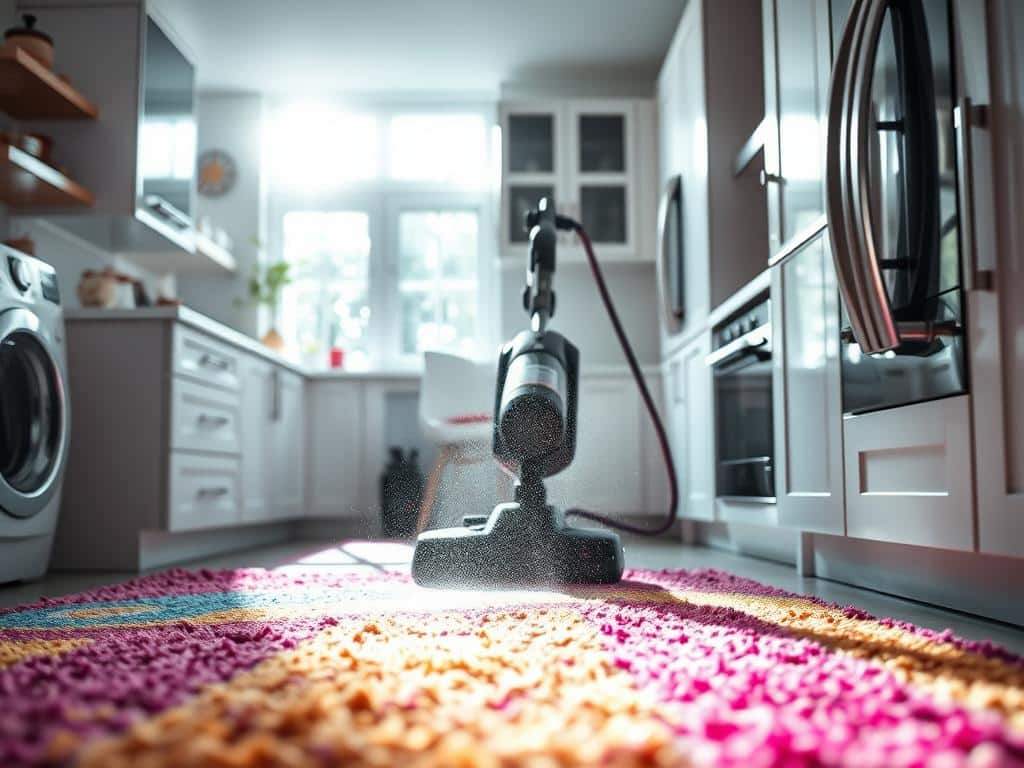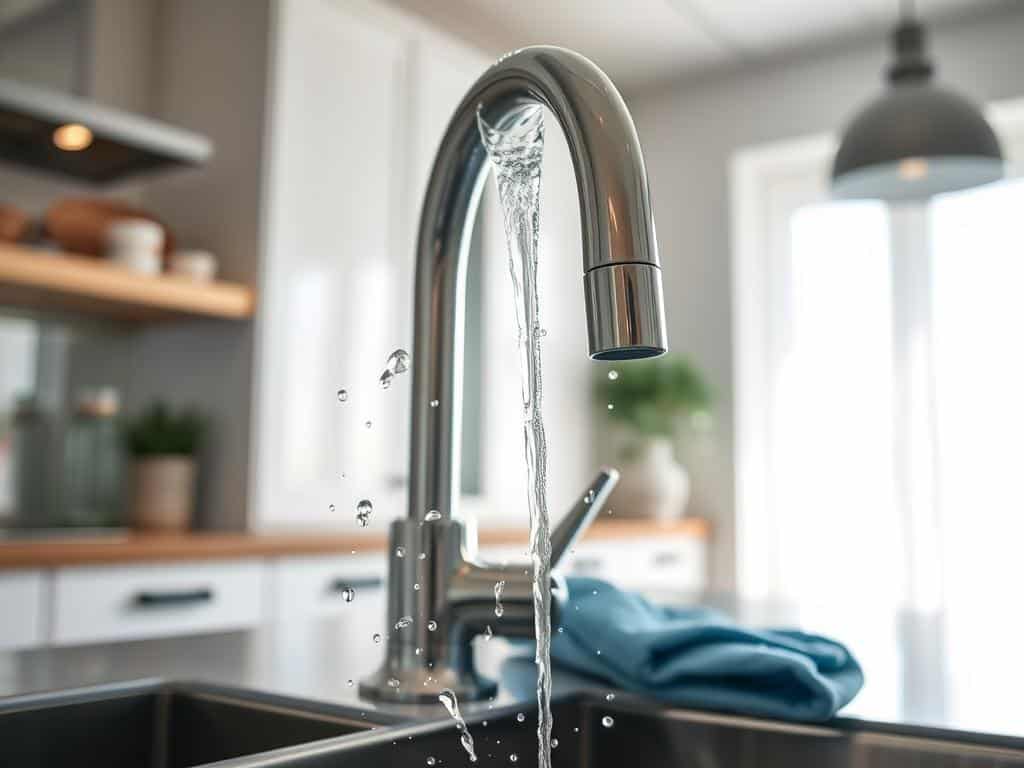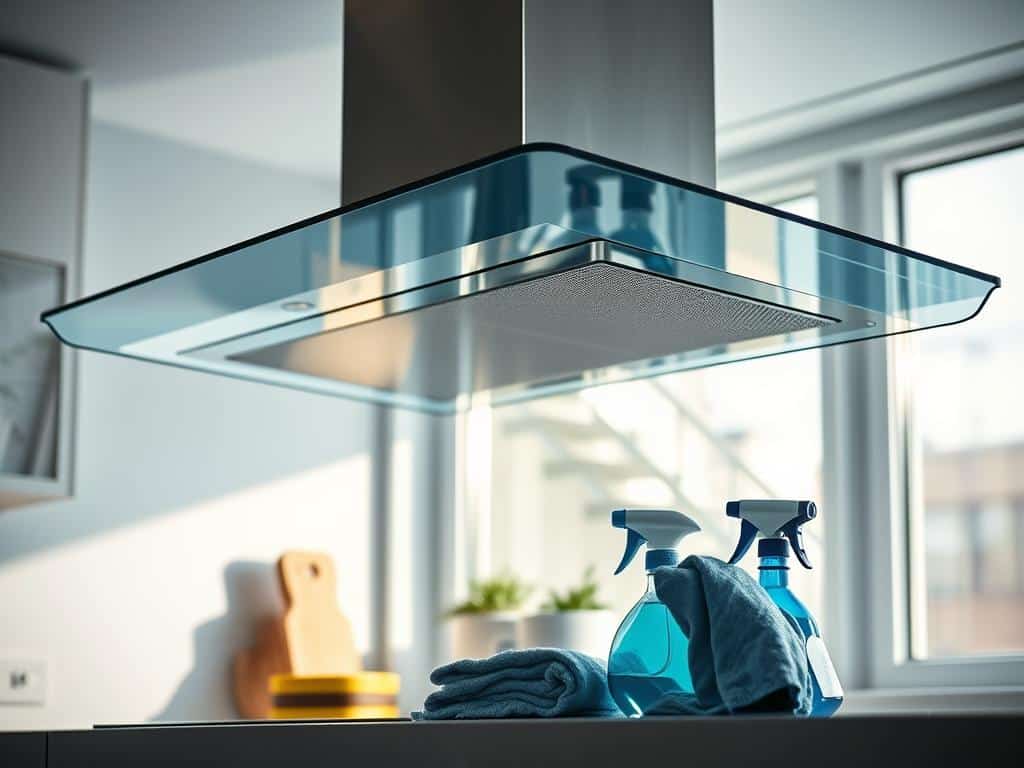
Maintaining clean and hygienic kitchen rugs is essential for both the aesthetic appeal and the overall cleanliness of your kitchen. Given the high-traffic nature of this area, kitchen rugs are prone to spills, stains, and dirt accumulation. A consistent cleaning routine is not only vital for keeping your rugs vibrant and fresh but also for ensuring a healthy kitchen environment.
This comprehensive guide offers practical kitchen rug care tips to help you maintain your rugs in top condition. From understanding your rug material to choosing the right cleaning methods, we cover everything you need to know for effective kitchen rug cleaning.
Understanding the type of material is crucial as different rugs, such as cotton, synthetic fibers, wool, microfiber, bamboo, and jute, require specific cleaning techniques. Regular maintenance, including vacuuming at least once a week, addressing spills immediately, and using appropriate cleaners, can significantly extend the lifespan of your kitchen rugs.
Moreover, consider using rug pads to prevent slipping and ensure even wear and tear. While professional cleaning is recommended once or twice a year, depending on the material and usage, you can also adopt DIY deep cleaning methods using carpet or steam cleaners. For valuable or delicate rugs, professional services are advised to avoid any potential damage.
For more detailed daily cleaning routines, [https://www.squeakycleaner.homes/daily-cleaning-routine-for-a-spotless-home/] offers insights on maintaining a spotless home, ensuring cleanliness and hygiene at all times.
Understanding Your Kitchen Rug Material
Recognizing the material of your kitchen rug is essential to applying the correct cleaning techniques and maximizing its lifespan. Different materials have unique properties that determine how they should be maintained. Learning to identify your kitchen rug materials can help you select the best cleaning methods to retain the rug’s aesthetic appeal and functionality.
Identifying Common Rug Materials
Kitchen rugs come in a variety of materials, each with its own specific characteristics and care requirements. Here are some commonly used kitchen rug materials:
- Cotton: Durable and easy to clean, cotton rugs are often machine washable with cold water and mild detergent.
- Synthetic Fibers: Stain-resistant and easy to maintain, these rugs typically require thorough vacuuming and spot cleaning with a mild detergent and warm water solution.
- Wool: Luxurious and durable, wool rugs need regular vacuuming and gentle spot cleaning using cold water and wool-safe detergent.
- Microfiber: Highly absorbent and easy to clean, microfiber rugs should be vacuumed frequently and machine washed with cold water and mild detergent.
- Natural Fibers (Bamboo or Jute): These eco-friendly options require gentle vacuuming with a brush attachment and spot cleaning with a mild soap and water solution.
Learn more about how to wash kitchen to keep them in top condition.
Importance of Material-Specific Cleaning Methods
Understanding the importance of material-specific rug maintenance is crucial to prolonging the life of your kitchen rug. Each type of material demands a unique cleaning approach to prevent damage:
- Cotton: Machine washable, making it easy to clean and maintain.
- Synthetic Fibers: Resilient to stains and often require simple spot cleaning.
- Wool: Requires gentle handling to prevent fiber damage and color fading.
- Microfiber: Requires frequent vacuuming to maintain absorbency and appearance.
- Natural Fibers: Delicate and need careful cleaning to avoid weakening the fibers.
By ensuring proper care for various rug types, you can maintain their beauty and functionality for years to come. For a deeper understanding of cleaning techniques, you may also consider reading about ultrasonic cleaners, a precise cleaning tool that can be useful for maintaining certain types of rugs.
General Cleaning Tips for Kitchen Rugs
Whether you have one kitchen rug or multiple, maintaining their cleanliness is essential for a healthy and inviting kitchen space. Here are some general cleaning tips that will help keep your kitchen rugs spotless and fresh.
Frequency and Importance of Vacuuming
Consistently vacuuming kitchen rugs can prevent dirt and debris from embedding into the fibers, which can lead to discoloration and wear. Aim to vacuum your kitchen rugs at least once a week, and even more frequently if you have pets or high foot traffic. Frequent vacuuming helps maintain the rug’s appearance and prolongs its lifespan.
Immediate Action for Spills and Stains
A swift spill response is crucial to prevent long-term stains. The moment a spill occurs, blot the area with a clean cloth or paper towel to absorb as much liquid as possible. For organic spills like wine or coffee, using cold water and a mild detergent can be effective. Grease spills might require a stronger solution like baking soda and vinegar paste. Quick action can mitigate potential damage and keep the rug looking pristine.
Choosing the Right Cleaners
Proper rug cleaner selection is vital to avoid damage to the rug fibers. Organic stains typically respond well to natural cleaning solutions, whereas commercial cleaners may be necessary for tougher stains. Read the manufacturer’s instructions to ensure the cleaner is compatible with your rug material.
To help you choose the right cleaner, consider the following table:
| Type of Stain | Recommended Cleaner |
|---|---|
| Wine or Coffee | Mild Detergent and Cold Water |
| Grease | Baking Soda and Vinegar |
| Pet Accidents | Enzyme Cleaner or Hydrogen Peroxide |
Using Rug Pads and Maintaining Even Wear and Tear
Rug pad benefits are manifold; they provide safety by preventing slips and reduce wear and tear by adding a protective layer between the rug and the floor. Regularly rotating your kitchen rugs can also ensure even wear, extending the life of the rug. Choosing a high-quality rug pad is crucial for achieving these benefits.
Professional vs. DIY Deep Cleaning Methods

While regular cleaning keeps rugs in good shape, deep cleaning rugs periodically is necessary for removing deeply embedded dirt and allergens. DIY methods like machine washing (for cotton rugs) or steam cleaning can be budget-friendly and effective. However, professional cleaning is recommended for valuable or delicate rugs, as experts have the equipment and knowledge to thoroughly clean without causing damage.
How to Clean Kitchen Rugs Based on Material Type
Understanding the material of your kitchen rug is crucial to maintaining its appearance and longevity. Various materials require different cleaning methods, and knowing these specifics can greatly enhance your rug care routine.
Cotton Rugs
Cotton rugs are popular for their versatility and ease of cleaning. When washing cotton rugs, it’s essential to follow the care instructions on the label, typically allowing for machine washing with warm water. Shaking the rug to remove dirt before washing and letting it air dry can prevent shrinkage and fading.
Synthetic Fiber Rugs
Synthetic rug care often involves vacuuming to remove surface debris and machine washing on a gentle cycle. Materials like polyester and polypropylene are stain-resistant, making them suitable for high-traffic areas. Regular maintenance helps keep these durable rugs looking fresh and clean.
Wool Rugs
When it comes to wool rug maintenance, routine vacuuming is your best ally due to the rug’s durability and natural oils. Cleaning wool rugs entails using cold water and wool-safe detergents to preserve the fibers. Professional cleaning is recommended every three to five years to maintain their luxurious feel and appearance.
Microfiber Rugs
Cleaning microfiber rugs is straightforward but requires special care to maintain their absorbent quality. Avoid using fabric softeners which can damage the microfibers. Instead, vacuum regularly and machine wash with mild detergent. For spills, spot cleaning ensures the rug retains its pristine condition.
Bamboo and Jute Rugs
Bamboo and jute rug upkeep involves careful vacuuming and immediate attention to spills. These natural fiber rugs are not machine-washable, so spot cleaning with water and mild soap is recommended. Ensuring the rug is thoroughly dried helps prevent the fibers from weakening and maintains their structural integrity.
Spot Cleaning and Stain Removal Techniques
When it comes to maintaining the pristine condition of your kitchen rug, effective stain removal methods are crucial. Spot cleaning using natural rug cleaning solutions can efficiently tackle common kitchen stains. One popular mixture involves combining liquid dish detergent, warm water, and white vinegar, which is notably effective against alcohol and soft drink spills. Additionally, hydrogen peroxide may be suitable for lighter rugs to lift tougher stains without causing damage.
Natural Cleaning Solutions
Natural cleaning solutions are often gentle yet effective. For instance, a concoction of baking soda and vinegar can address a variety of stains without harsh chemicals. Another useful approach includes hardening substances like wax or gum using ice cubes before scraping them off and treating any remainder with rubbing alcohol or a dry-solvent spot cleaner. These natural rug cleaning solutions not only minimize environmental impact but also reduce the risk of damaging delicate rug fibers.
Using Commercial Stain Removers
Commercial stain removers can also play a significant role in maintaining your kitchen rug. Products like Folex are particularly lauded for their ability to address tough stains efficiently. For pet-related accidents, specialized options such as Natural Pet Stain & Odor Remover are recommended to target both the stain and odor. However, whether you’re dealing with tomato sauce, wine, or other stubborn stains, the effectiveness of stain removers can greatly depend on acting swiftly and following the product instructions meticulously.
Importance of Testing Cleaners
The importance of cleaner testing on rugs can’t be overstated. Before full application, always test any new cleaning solution on a small, inconspicuous area of the rug. This is critical to ensure that the cleaner doesn’t cause discoloration or damage. Allow at least 15 minutes for the cleaner to sit during the test, checking for adverse reactions. This step not only preserves the rug’s appearance but also ensures the longevity of its material.
By implementing these spot cleaning and stain removal techniques, you can effectively extend the life and enhance the appearance of your kitchen rugs. Whether using natural solutions or commercial products, a meticulous and material-specific approach is key to maintaining a clean and inviting kitchen atmosphere.



